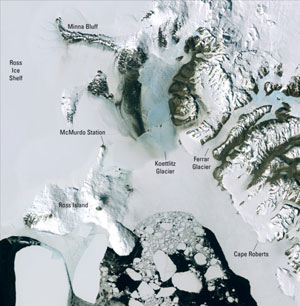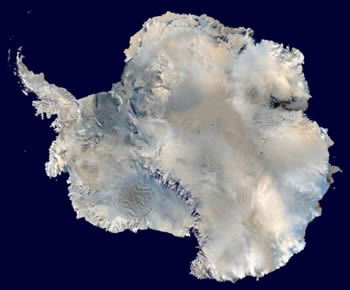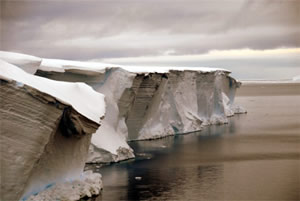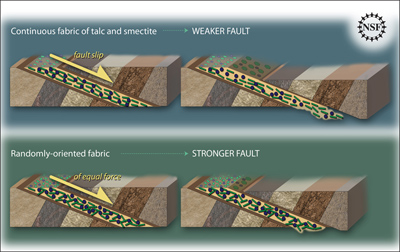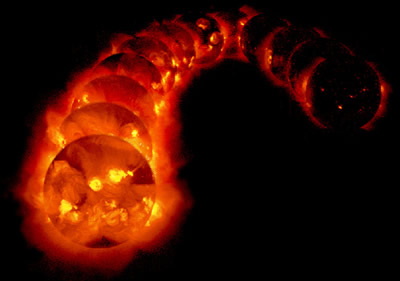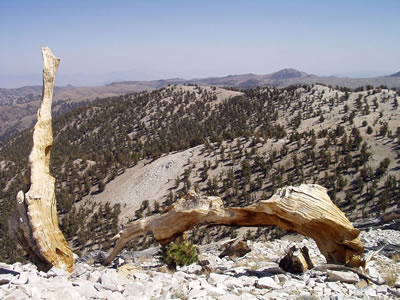Click on image for full size
Courtesy of USGS
Newly Unveiled Satellite Map of Antarctica Is a Unique Tool for Scientists, Educators and the Public
News story originally written on November 27, 2007
Representatives from the National Science Foundation (NSF), the U. S. Geological Survey (USGS), the National Aeronautics and Space Administration (NASA) and the British Antarctic Survey (BAS) worked together to produce a new map of Antarctica that is going to be a very helpful tool for studying that region. It is called a mosaic map because the map combines thousands of scenes into one map that is has a lot of details and accurate information.
The map is called LIMA, which is short for the Landsat Image Mosaic of Antarctica. Landsat launches satellites that take digital photographs of of the Earth's land masses and coastal regions. Scientists use these images to study global change, natural disasters, and other parts of the Earth's environment.
The LIMA map will be very helpful to scientists and the general public, especially because people today are worried about the polar ice caps and the warming temperatures in the Arctic and Antarctic regions. LIMA will be used to answer scientific questions and plan fieldwork in the large unexplored areas of Antarctica. Teachers and students will use LIMA to learn more about Antarctica, and will help students compare features of Antarctice with other parts of the Earth or even other planets. For example, a middle-school student could compare landforms in the glaciated valleys of Antarctic to similar features in the Rocky Mountains or even compare a rock glacier in Antarctica with some of the features scientists are studying in images from Mars.
Robert Bindschadler, a scientist at NASA, said that the new mosaic is the most detailed map of Antarctica and offers the most accurate, true-color views of the continent possible. "This innovation, compared to what we had available most recently, is like watching the most spectacular high-definition TV in living color versus watching the picture on a small black-and-white television," he said.


